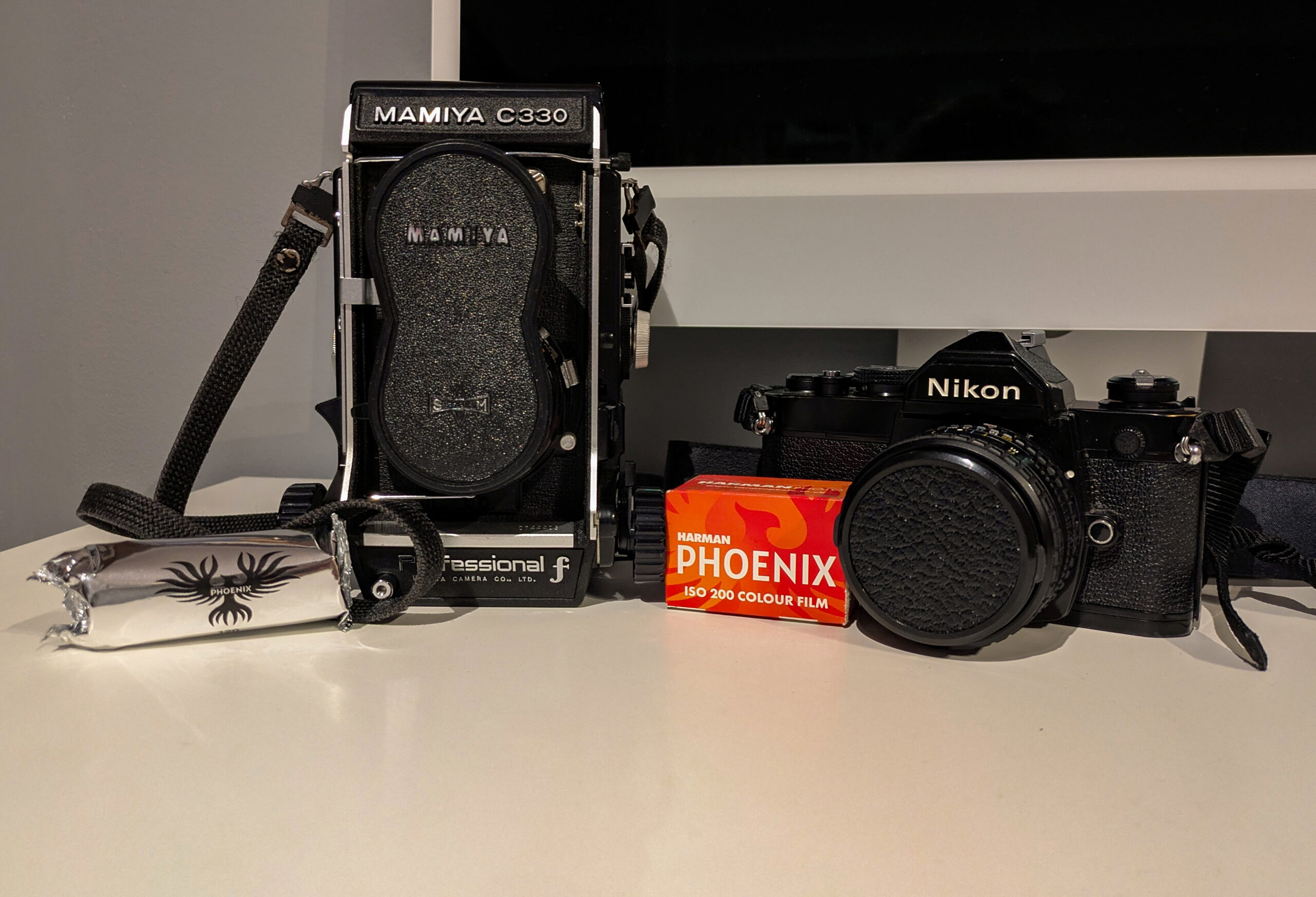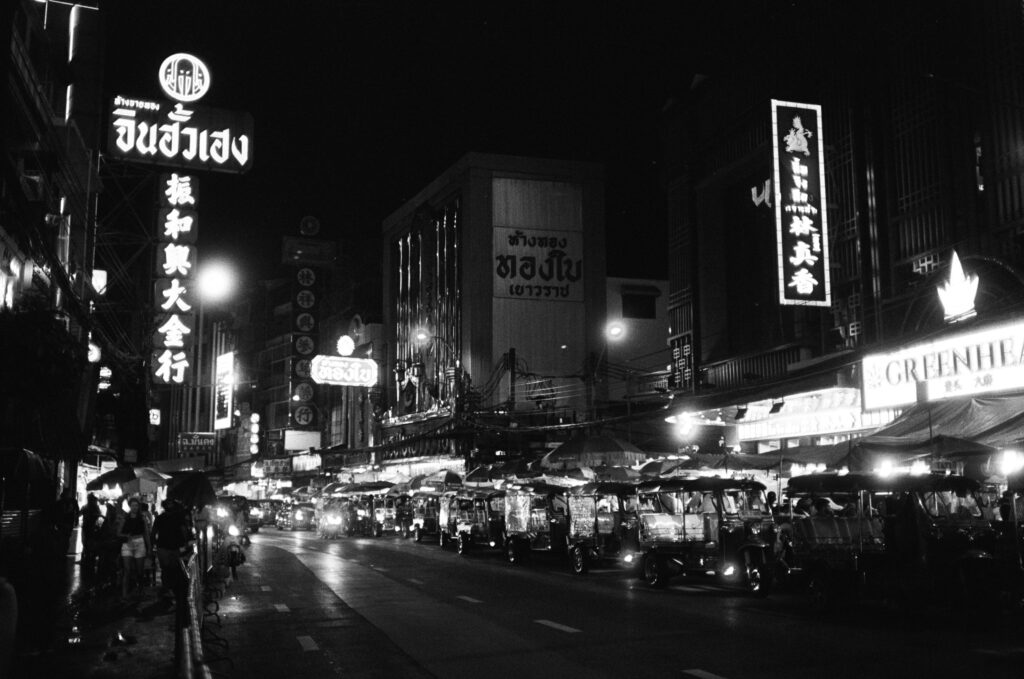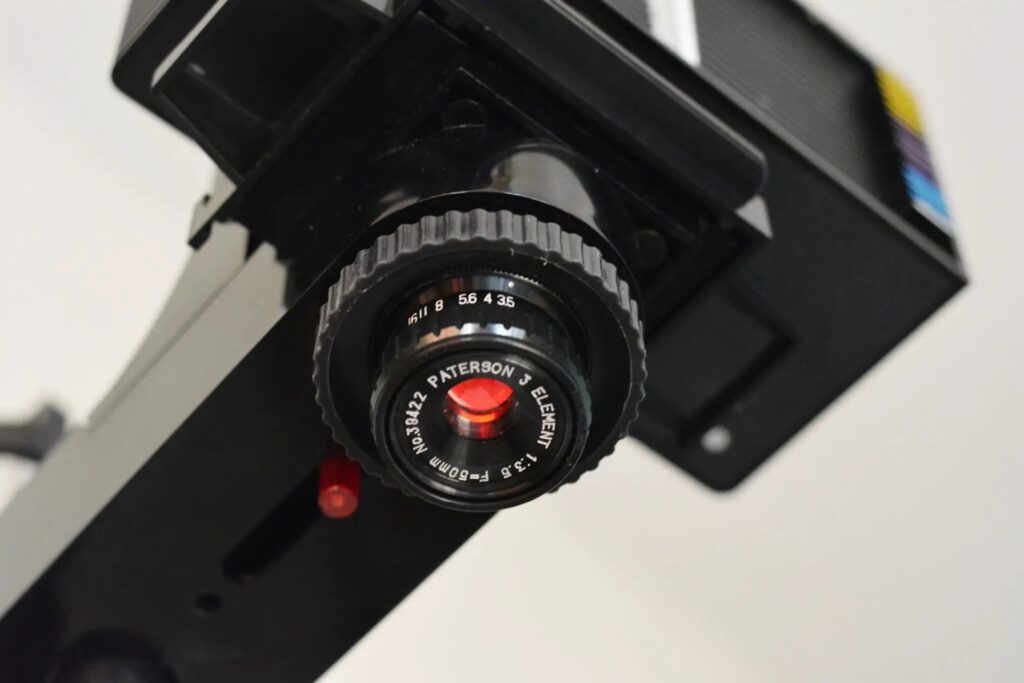As I imagine many of you already know, in late 2023, Harman released a new colour film, which was the first colour film that they have produced; formerly only making black and white films under the Ilford name. Now, when they released it, I had only been shooting analogue for a couple of months, but I was still ecstatic; unfortunately, so was most of the analogue community, and it was as such, sold out for a long, long time. When I eventually got my hands on a roll, I put it straight into my Nikon FM and have since shot its medium format counterpart with my Mamiya C330.
Phoenix is quite a unique film; it has the feeling of expired film with less stress and a more reliable output, so it is safe to say it’s also a bit like Marmite. I have seen so many people say that they don’t like it (we’ll get into why later), but in my opinion, the effect it gives is stunning. As a lover of expired film, it’s not much of a surprise that I was so drawn to the look of Phoenix, and I am happy that I have tried it.

I should note that all of my shots were taken using an ISO of 125 instead of the 200 box speed, while still having the lab develop it for 200. This is because while Phoenix is a lovely film, it is also a wild film. It hates being underexposed; the images very quickly become muddy, and the already pretty heavy grain is amplified to create a mess, to put it bluntly. But do not make the mistake of overexposing it, as Phoenix has no anti-halation layer, meaning that the highlights can blow out and often end up having a red glow. I have seen a lot of people use it with street lights to create lovely red rings; however, it can easily get out of hand. An example of this is the picture below. I planned to capture the church with the “Lest we forget” flag waving slightly in the wind, but the halation from the white bricks covered the top part of the image in a red smear, distracting from the flag. It is fair to say that Phoenix needs to be babied.

Oh my god, is this film grainy. Its high grain is yet another attribute from Phoenix that mimics expired films, and while I love the grain, I did tone it down in Photoshop. I believe that it is this, in conjunction with its low exposure latitude, that is the main reason why people are not huge fans of Phoenix. In a lot of films, the grain works with the colours to give analogue photography its feeling, its personality. Phoenix got this memo and turned it up to eleven. Without editing, the images still look nice and the grain still works to create the distinct analogue feeling, but it can become distracting. This is why I prefer the medium format version. Phoenix lends itself to the larger negative incredibly. The grain is less prominent, and it just generally feels tamer while still holding the Iconic look that the 35mm version has. Unfortunately, it does come with the slight added cost that all 120 films have, but I feel that it’s worth it.

Phoenix’s colour profile has become (in my mind anyway) quite iconic. The negatives have an almost alien blue tone to them, and when it’s inverted, the colours really shine. As the branding suggests, it has bright, punchy reds. These reds are the most noticeable and the most prominent in Phoenix, but when you focus less on them, you can see just how the blue and green tones shine as well. I don’t have the facilities to scan film myself (yet), so I get one of my local labs to scan it (Analogue wonderland for anyone wondering), and they send it back with its typical look, but I have seen people reduce how powerful the reds are when they scan it, and the results are stunning. It is definitely one of the first rolls I am going to home-scan when I get the ability.
Alongside the grain and its punchy, identifiable colours, Phoenix is a fairly contrasty film. While it works to help create its aesthetic, it doesn’t combine well with the film’s relatively low exposure latitude. I mentioned earlier that I thought this was one of the reasons why people don’t like the film, and it’s because the shadows very quickly become muddy, and the highlights can get obscured by the halation. The effect is further amplified when shooting it at the box speed of 200. Exposing it for 125 and getting the lab to develop it normally gives the film more light, which helps to preserve the detail in the shadows. It can come with the cost of slightly more halation, but (in my experience anyway) the halation very rarely seemed to cause any issues apart from in a couple of images where I failed to anticipate it and adjust the exposure accordingly.

Overall, I can’t say it enough, but I love this film; it rivals Kodak Ektar for my favourite, and while I will admit that it is not perfect, its imperfections and quirks draw me to it in the same way that expired film does. I know in the title, I said it was a semi-begrudging love letter, but honestly, I feel like the issues with Phoenix are trivial when compared to what it can produce.
Just like developing, I use analogue wonderland to get all of my films and currently it is selling for around £13 in both 35 and 120 format so it’s not the cheapest film to experiment with but I would whole heartily recommend that you try it in medium format if you can as it’s a calmer step into phoenix’s style; I would however, recommend that you shoot it at ISO 125 like I did as it helps to remove some of the muddiness that the shadows can create. It is safe to say I will always have a roll of Phoenix in my stock, ready for a sunny photo walk.
Now for the sad part, it has come to my attention that Harman are going to be discontinuing Phoenix in favour of the newer Phoenix II. While I find this incredibly sad, I can also see why. They have used Phoenix to prove that there is a viable market for new colour films and to get feedback from us to make a better and more refined version. It is only reasonable that it gets the proverbial axe, but that doesn’t mean I’m going to let them take it without first buying a stock to keep me going, for a while anyway. I will definitely be trying the new Phoenix II, and in fact, I have some rolls in my stash already. The images I have seen from it so far look stunning, but there is something about the original that speaks to me. When shooting it, you almost have to learn how it will react to each scene, and every time you get a shot you like, it almost feels like you’re taming a rabid beast.

I will end this sort of rant here, as I would rather like to have a cup of tea, and I could go on for hours if I don’t stop now. If you like my images and want to see more than you can find my full Flickr stream here, and the album specifically for Phoenix in both 35 and 120 formats here. You can also find me on Instagram here. I would also like to say a special thanks to my great uncle for giving me the Nikon FM that kick-started my film journey, as well as constantly helping me with all my undoubtedly mind-numbing questions. As well as to my dad and grandad for getting me into photography as a whole, and of course, thank you all for reading the ramblings of a Phoenix lover. Happy shooting, everyone.
Share this post:









Comments
Paul Taylor on Harmon Phoenix – a semi-begrudging love note with a farewell tear goodbye.
Comment posted: 27/08/2025
Nice C330. I have a 220 and a 330f - I actually prefer the C220 but both are underated cameras that deliver great results and have exceptional lenses.
Comment posted: 27/08/2025
Comment posted: 27/08/2025
Gordon Ownby on Harmon Phoenix – a semi-begrudging love note with a farewell tear goodbye.
Comment posted: 27/08/2025
Comment posted: 27/08/2025
Neal Wellons on Harmon Phoenix – a semi-begrudging love note with a farewell tear goodbye.
Comment posted: 27/08/2025
Comment posted: 27/08/2025
Geoff Chaplin on Harmon Phoenix – a semi-begrudging love note with a farewell tear goodbye.
Comment posted: 28/08/2025
Comment posted: 28/08/2025
shawn granton on Harmon Phoenix – a semi-begrudging love note with a farewell tear goodbye.
Comment posted: 28/08/2025
Where has it been said that Harman is discontinuing Phoenix I? I do not see anything on Harman's website saying the original color emulsion is discontinued. Online speculation, yes, and I understand why we'd assume that. But I went on a Phoenix II photowalk here in Portland with the Harman rep, and they said there were no current plans to discontinue Phoenix I as long as it was still selling, and there's plenty of stock at the moment.
Comment posted: 28/08/2025